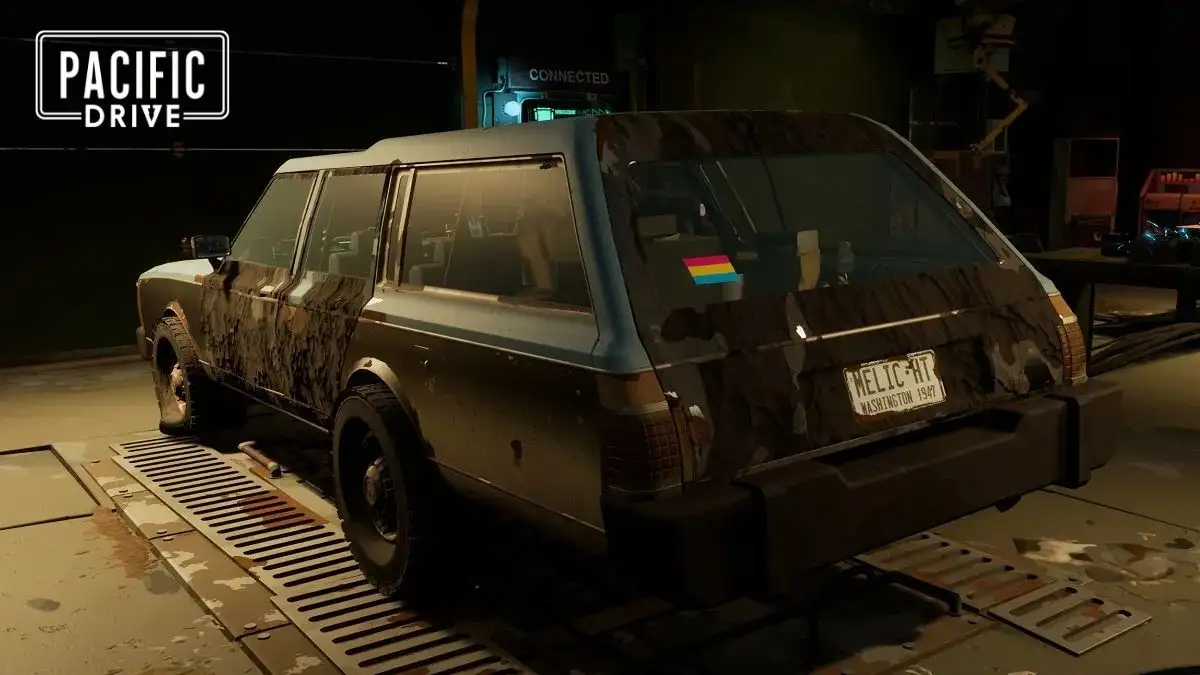How to Fix Quirks With the Tinker Station in Pacific Drive? A Complete Guide
by Naveenkumar
Updated Feb 28, 2024

Pacific Drive
"Pacific Drive," a 2024 survival game by Ironwood Studios and published by Kepler Interactive, unfolds in the picturesque Pacific Northwest. Players navigate this scenic landscape on foot or in a station wagon, embarking on an escape quest. The game, experienced through a first-person perspective, introduces challenges in the form of metal monsters eager to latch onto the player's vehicle.
Beyond survival, the station wagon serves as a customizable asset, offering repair options and personalization at the player's garage. Development of "Pacific Drive" commenced in 2019 when creative director Alexander Dracott envisioned the game during a drive through the Olympic Peninsula.
Released on February 22, 2024, for PlayStation 5 and Windows, "Pacific Drive" received positive reviews for its immersive atmosphere, well-crafted characters, and detailed vehicle design. While praised, some critiques arose concerning the game's repetitive and challenging gameplay, providing players with a mix of enjoyment and difficulty in their survival journey.
Immerse yourself in the art of strategy games on Fresherslive! Our games article offers tips and tactics to help you conquer virtual worlds. Sharpen your strategic skills and become a gaming master.
How to Fix Quirks With the Tinker Station in Pacific Drive
Understanding the Tinker Station
The tinker station in Pacific Drive allows players to diagnose and fix their car's quirks, such as the hood popping open unexpectedly or the radio changing stations randomly. Located near the auto shop's parking area, it features a simple interface with four columns representing car parts, actions, and their corresponding effects.
Diagnosing Quirks
Players need to fill in the blanks of a sentence format to identify the cause and effect of a quirk. For example, "when the headlights turn on, then the radio toggles." Experimentation and observation are key, especially as the line between cause and effect can be unclear amid the chaos of the game environment.
Using Guesses
Players have eight guesses to diagnose a quirk, with incorrect guesses resulting in the loss of a guess. Correctly identifying the cause and effect refunds a guess. If guesses run out, players can reset their count by returning to the auto shop through a Gateway.
Dealing with Subtle Quirks
Not all quirks are immediately noticeable, and some may affect components rarely observed by the player. While dramatic quirks like the hood popping open are obvious, subtle ones can be left unattended if they don't impact survival. Upgrading the tinker station with the Investigator Module can help diagnose difficult quirks by providing feedback on the correctness of guesses and highlighting potentially affected car parts.
Pacific Drive Gameplay
In "Pacific Drive," players embark on a survival adventure set in the Olympic Exclusion Zone of the Pacific Northwest, unfolding in the year 1998. The game unfolds from a first-person perspective as players traverse the landscape either on foot or in a station wagon.
A unique aspect is the ability to customize the vehicle at the player's garage, serving as the central base of operations. Vehicle diagnostics are managed through a headset, allowing players to address issues like quirky car behavior, such as the horn sounding unexpectedly when turning the wheel. Repairs in the game range from on-the-go fixes like swapping flat tires and using a blowtorch to more intricate tasks handled in the garage.
The Inventing Station within the garage becomes a pivotal resource, enabling the harvesting of materials and creation of machines that unveil new routes, add fuel to the car, and destabilize zones. Facing challenges like metal monsters latching onto the car and weather elements affecting vehicle handling, players must strategize repairs and navigate through electrical anomalies and barriers.
The journey is not just about survival; players can discover crafting recipes, blueprints, and engage with non-player characters to escape the Olympic Exclusion Zone, all while collecting energy cores in each level to unlock gateways and return to their garage, triggering a shift in the game's dynamics with increased hostility and impending storms.
Pacific Drive Overview
Developer
Ironwood Studios
Publisher
Kepler Interactive
Director
Alexander Dracott
Producer
Alyssa Askew
Engine
Unreal Engine 4
Platforms
PlayStation 5, Windows
Release
February 22, 2024
Genre
Survival
Mode
Single-player
Pacific Drive Trailer
How to Fix Quirks With the Tinker Station in Pacific Drive-FAQs
The Tinker Station is a feature in Pacific Drive that allows players to diagnose and fix quirks in their car, such as unexpected behaviors like the hood popping open or the radio changing stations randomly.
The Tinker Station is located near the auto shop's parking area, typically positioned to the right of the charging station.
The Tinker Station interface consists of four columns representing car parts, actions, and their corresponding effects. Players need to fill in the blanks to identify the cause and effect of a quirk.
Experimentation and observation are crucial for diagnosing quirks, especially considering the sometimes unclear relationship between cause and effect in the game environment.
Players have eight guesses to diagnose a quirk, with each incorrect guess resulting in the loss of a guess. However, correctly identifying the cause and effect refunds a guess.







